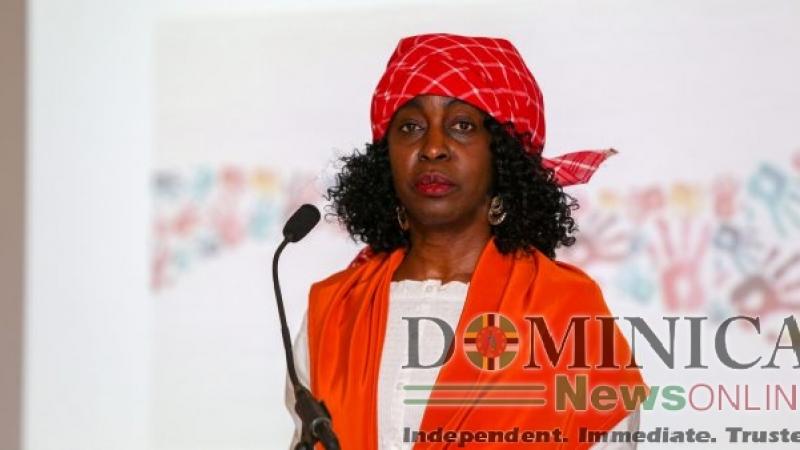Dominican intellectuals highlight importance of UWI Dominica Country Conference

Senior Lecturer at the University of the Bedfordshire in the United Kingdom (UK), Dr. Violet Cuffy said the upcoming Dominica Country Conference, 2019 will focus on advancing creole heritage, Dominica’s culture and tourism and Kalinago people.
She spoke via a video conference at the University of the West Indies (UWI) Open Campus on Monday, July 15th , 2019.
UWI will be hosting its 3rd country conference at the campus, on August 15th and 16th, 2019 under the theme “Creole as Cultural Heritage: Framing, strengthening and Advocating.”
“The creole conference is really an initiative as a part of a wider project which is focused on establishing a research intellect. The core focus is to ensure advancement of creole heritage and culture, a multi disciplinary reproach through the unique indigenous creole language, arts, storytelling, song and dance, tourism and of course our kalinago people,” Cuffy said. “In that regard, the networking activities aim to establish and sustain long term achievement of partnership between key actors and stakeholders on island, in the diaspora, among the Dominican communities and our sister creole speaking nationals far and wide.”
She said their primary aim is to establish a long term network between the Ministry of Culture, UWI, DSC, the University of Bedfordshire, among others.
Cuffy went on to explain what will take place at the two-day country conference.
“The conference begins with a cultural extravaganza on Wednesday evening, August the 14th where we will display various dimensions of our local artists, dance, drama, song and story telling. In addition to that we will be graced with our lovely creole cuisines and establish the initial networking that we need to get to know each other,” she said.
She continued “A series of three sessions will be held on day one (August 15th) with the first session called the”creole language, historical and contemporary perspective. The second session n the first day will focus on creole music and artistic cultural heritage…in the afternoon we have a session on policies in creolization, politics, education and tourism… and that will take us to the end of day one.”
Cuffy said on day two (August 16th) the focus will be on national experts in Dominica creole education, popular creole music and creole in the media, among others.

Anthropologist and historian Dr. Lennox Honychurch, in a presentation at the press launch, highlighted the role of African and Kalinago culture in Dominica’s national heritage.
“Africans are recorded living in Kalinago villages as early as the late sixteenth and early seventeenth centuries. There were Africans who had traveled back with Kalinago seafarers after their raids on neighboring islands or were deserters from ships that had stopped briefly in Dominica to refresh their crews,” Honychurch said.
He continued, “In Dominica Kwéyoalité had its roots in the early process of contact and cultural exchange that took place as West Africans adapted their continental experience to the more compact tropical island world of the Kalinagos. This interaction between these two alienated groups was evolving a form of Kwéyol culture on the edge of European influence. As the years progressed, traces of African languages, such as Yoruba, Twi, Ewe, Fon, Ibo, Ibibo, Nembe, Ashanti, Kru, Wolof, survived in the island’s language along with Kalinago. Likewise, aspects of material culture in the form of became intertwined.”
Dr. Honychurch also gave examples of the Kalinago names of places, plants, and animals that survive today.
“Their speech is filled with references to Kalinago place-names such as Colihaut, Calibishie, Coulibistrie, Bataka, Batali, Salybia, and Boeri. They also refer, for example, to cirique and touloulou (crabs), acouma, acajou, balata, and coubari (trees), zanana, cashima, cowossol, and zicaque (fruit), yen-yen and ariri (insects), abolo, zandoli (anoli), iguana, (reptiles) sibouli, vivaneau, balaou, couliou, titiwi (fish), batu, cali, canáoa, pwipwi (fishing equipment), and even the national bird, the sisserou.”
Honychurch said much of these African-Kalinago influences and skills are being lost as certain practices have been changing over the years.